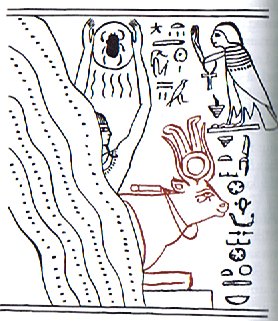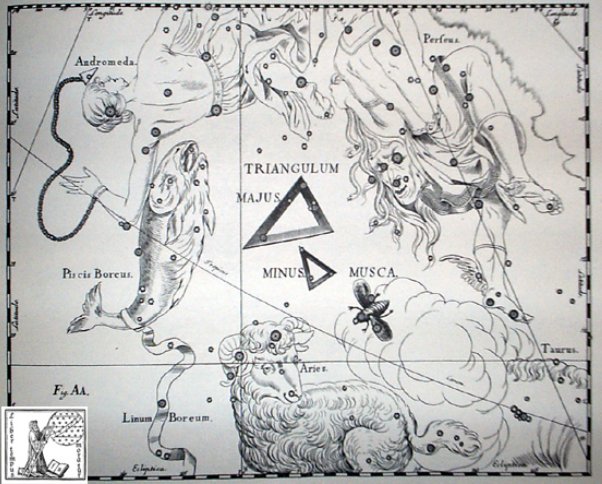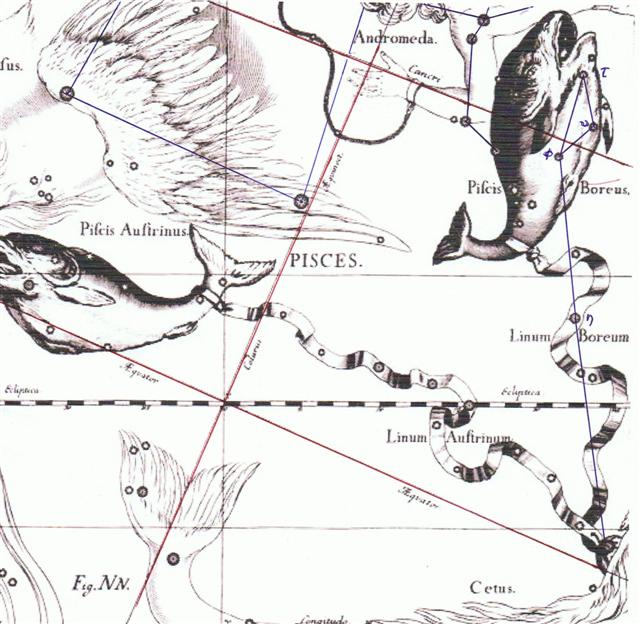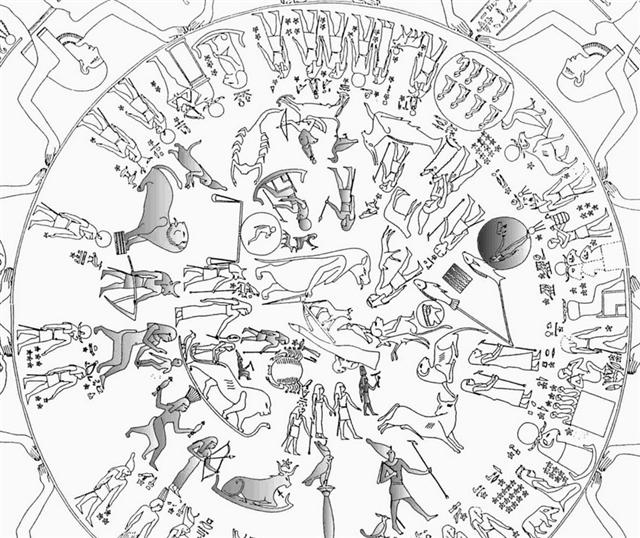According to Wilkingson the illustration below shows the Hat-hor cow emerging from the side of a mountain:  Earlier we have counted the duration of this watery 'mountain' to be 121 nights and therefore possibly ending with l May 1 (121):
At the time of rongorongo May 1 was the day when Bharani (*41.4) rose with the Sun. And the scarab rising up ahead was an insect not much different from the descending Bharani fly.
Among all these different interpretations and illustrations we can perceive a basic pattern: > < Towards the past something was increasing and ahead was something else increasing, in the front direction. Although this pair of opposites were not always visualized together. At left in Ga1-6 the eating (kai) gesture at left can be understood as increasing 'old mountain' (mauga) in the past (before Aug. 14, 3114 B.C.):
With a dark old 'mountain' at left it had to be the glorious Sun light (in the sky, ragi) which was increasing towards the right (ahead). Aries and Musca Borealis could together have formed a pair which was duplicating the decreasing sign (>) formed from the Pisces strings:
> > Perhaps the Hat-hor Cow, which naturally should have been the mother ('house') of the Golden Calf (Taurus), together with the Scarab Beetle rising up towards the sky, at some time was changed into the double and reversed (mirror) sign formed from the Pisces strings together with the Aries Ewe and the descending Carry-on Fly.
... From a religious point of view, the high regard for flies, whose increase or reduction causes a similar increase or reduction in the size of the human population, is interesting, even more so because swarms of flies are often a real nuisance on Easter Island, something most visitors have commented on in vivid language. The explanation seems to be that there is a parallel relationship between flies and human souls, in this case, the souls of the unborn. There is a widespread belief throughout Polynesia that insects are the embodiment of numinous beings, such as gods or the spirits of the dead, and this concept extends into Southeast Asia, where insects are seen as the embodiment of the soul ... ... Night came, midnight came, and Tuu Maheke said to his brother, the last-born: 'You go and sleep. It is up to me to watch over the father.' (He said) the same to the second, the third, and the last. When all had left, when all the brothers were asleep, Tuu Maheke came and cut off the head of Hotu A Matua. Then he covered everything with soil. He hid (the head), took it, and went up. When he was inland, he put (the head) down at Te Avaava Maea. Another day dawned, and the men saw a dense swarm of flies pour forth and spread out like a whirlwind (ure tiatia moana) until it disappeared into the sky. Tuu Maheke understood. He went up and took the head, which was already stinking in the hole in which it had been hidden. He took it and washed it with fresh water. When it was clean, he took it and hid it anew. Another day came, and again Tuu Maheke came and saw that it was completely dried out (pakapaka). He took it, went away, and washed it with fresh water until (the head) was completely clean. Then he took it and painted it yellow (he pua hai pua renga) and wound a strip of barkcloth (nua) around it. He took it and hid it in the hole of a stone that was exactly the size of the head. He put it there, closed up the stone (from the outside), and left it there. There it stayed ... The 'Bearer' (Bharani) was in principle the same, but the rightside Hathor cow had changed to a backside ewe and a pair of fishes:
The decreasing and increasing wedge signs were evidently also used on this globe where the Pegasus Square and Andromeda were placed in the frontal (increasing) half of the year:
|








